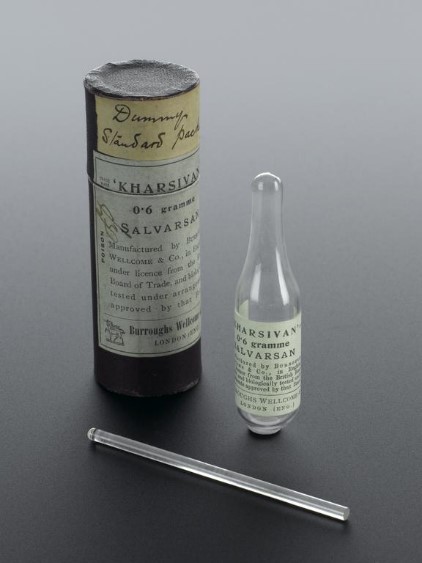The arsenic fingerprint: ancient and contemporary uses of a dangerous element
DOI:
https://doi.org/10.36790/epistemus.v18i36.339Keywords:
arsenic, history, applicationsAbstract
Among all the elements contained in the periodic table, arsenic is one of the most popular elements, as its name and symbol are quite well-known. Additionally, it carries a negative perception since it is commonly associated with adverse effects on people's health and the environment. However, throughout human history, arsenic has been used for several and contrasting purposes, including the production of medicines to combat different diseases and ailments, as well as a chemical warfare agent. This article aims to highlight some of the most distinctive uses of arsenic throughout history, with the purpose of providing an overview of the changing role it has played from ancient times to the present
Downloads
References
B. Gontijo and F. Bittencourt, “Arsenic – A historical review,” Brazilian Dermatology Annals, vol. 80 (1), pp. 91-95, February 2005. DOI: https://doi.org/10.1590/S0365-05962005000100001 DOI: https://doi.org/10.1590/S0365-05962005000100014
K. Moffitt, “Orpiment in Colonial Williamsburg: Challenges with the Identification of Yellow Arsenic Sulphides in Historic Housepaints”, Microscopy and Microanalysis, vol 27(S1), pp. 3012-3013, July 2021. DOI: https://doi:10.1017/S1431927621010461 DOI: https://doi.org/10.1017/S1431927621010461
E. Gliozzo and L. Burgio, “Pigments – Arsenic-based yellows and reds,” Archaelogical and Antropological Sciences, vol. 14(4), pp. 1-37, December 2021. DOI: https://doi.org/10.1007/s12520-021-01431-z DOI: https://doi.org/10.1007/s12520-021-01431-z
P. Martinez, M. Alfeld, C. Defeyt, H. Elleithy, H. Glanville, M. Hartwig, F.P. Hocquet, M. Jaber, P. Martinetto, D. Strivay, P. Walter: Hidden mysteries in ancient Egyptian paintings from the Theban Necropolis observed by in-situ XRF mapping. Plos one, vol. 18 (7), pp. 1-12, June 2023. DOI: https://doi.org/10.1371/journal.pone.0287647 DOI: https://doi.org/10.1371/journal.pone.0287647
R.H. Kretsinger, V.N. Uversky, E.A. Permyakov: Arsenic in Therapy en Encyclopedia of metalloproteins, Springer, vol. 1, pp. 131-135, 2013. DOI: https://doi.org/10.1007/978-1-4614-1533-6_492 DOI: https://doi.org/10.1007/978-1-4614-1533-6
M.F. Hughes, B.D. Beck, Y. Chen, A.S. Lewis and D.J. Thomas, “Arsenic exposure and toxicology. A historical perspective,” Toxicological Sciences, vol. 123(2), pp. 305-332, July 2011. DOI: http://doi:10.1093/toxsci/kfr184 DOI: https://doi.org/10.1093/toxsci/kfr184
R. Afshari, “The Chronicle of Arsenic Poisoning in the 19th Century,” Asia Pacific Journal of Medical Toxicology, vol. 5, pp. 36-41, June 2016. DOI: https://doi.org/10.22038/apjmt.2016.7405
P. Ghandi and R.K. Ingole, “Arsenicals review: Posion Vis-a-vis Medicine,” International Journal of Ayurveda and Pharma Research, vol. 11(1), pp. 73-81, January 2023. DOI: https://doi.org/10.47070/ijapr.v11i1.2625 DOI: https://doi.org/10.47070/ijapr.v11i1.2625
S. Prakash and A.K. Verma, “Arsenic: it's toxicity and impact on human health”, International Journal of Biological Innovations, vol. 3(1), pp. 38-47, March 2021. DOI: https://doi.org/10.46505/IJBI.2021.3102 DOI: https://doi.org/10.46505/IJBI.2021.3102
E. Shaji, M. Santosh, K.V. Sarath, P. Prakash, V. Deepchand and B.V. Divya. “Arsenic contamination of groundwater: A global synopsis with focus on the Indian Peninsula”, Geoscience frontiers, vol. 12(3), pp. 1-18, May 2021. DOI: https://doi.org/10.1016/j.gsf.2020.08.015 DOI: https://doi.org/10.1016/j.gsf.2020.08.015
ATSDR, “Arsenic Toxicity Cover”: Agency for Toxic Substances and Disease Registry, vol. 1. pp 1-109. May 2023. Webpage: https://www.atsdr.cdc.gov/csem/arsenic/standards.html.
P. Hunter, “A toxic brew we cannot live without: micronutrients give insights into the interplay between geochemistry and evolutionary biology”: EMBO reports, vol. 9(1), pp. 15-18, January 2008. DOI: https://doi.org/10.1038/sj.embor.7401148 DOI: https://doi.org/10.1038/sj.embor.7401148
C.Gurnari, E. De Bellis, M. Divona, T. Ottone, S. Lavorgna, S., and M.T. Voso,” When poisons cure: the case of arsenic in acute promyelocytic leukemia”, Chemotherapy, vol. 64(5-6), pp. 238-247, July 2020. DOI: https://doi.org/10.1159/000507805 DOI: https://doi.org/10.1159/000507805
X. Wang, L. Cao, J. Wu, G. Zhu, X. Zhu, X. Zhang, D. Han, N. Shui, B. Ni and J. Li, “Exploring the mechanisms of arsenic trioxide (pishuang) in hepatocellular carcinoma based on network pharmacology”. Evidence-Based Complementary and Alternative Medicine, vol. 2021, pp. 1-9, November 2021. DOI: https://doi.org/10.1155/2021/5773802 DOI: https://doi.org/10.1155/2021/5773802

Downloads
Published
How to Cite
Issue
Section
License
Copyright (c) 2024 EPISTEMUS

This work is licensed under a Creative Commons Attribution-NonCommercial-ShareAlike 4.0 International License.
The magazine acquires the patrimonial rights of the articles only for diffusion without any purpose of profit, without diminishing the own rights of authorship.
The authors are the legitimate owners of the intellectual property rights of their respective articles, and in such quality, by sending their texts they express their desire to collaborate with the Epistemus Magazine, published biannually by the University of Sonora.
Therefore, freely, voluntarily and free of charge, once accepted the article for publication, they give their rights to the University of Sonora for the University of Sonora to edit, publish, distribute and make available through intranets, Internet or CD said work, without any limitation of form or time, as long as it is non-profit and with the express obligation to respect and mention the credit that corresponds to the authors in any use that is made of it.
It is understood that this authorization is not an assignment or transmission of any of your economic rights in favor of the said institution. The University of Sonora guarantees the right to reproduce the contribution by any means in which you are the author, subject to the credit being granted corresponding to the original publication of the contribution in Epistemus.
Unless otherwise indicated, all the contents of the electronic edition are distributed under a license for use and Creative Commons — Attribution-NonCommercial-ShareAlike 4.0 International — (CC BY-NC-SA 4.0) You can consult here the informative version and the legal text of the license. This circumstance must be expressly stated in this way when necessary.
The names and email addresses entered in this journal will be used exclusively for the purposes established in it and will not be provided to third parties or for their use for other purposes.























